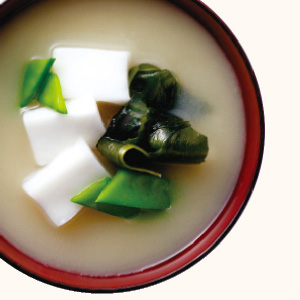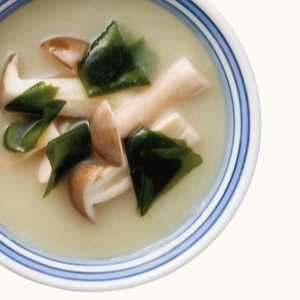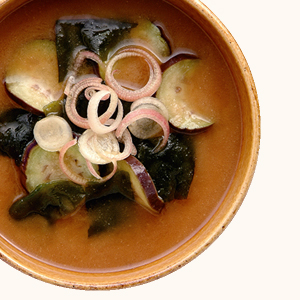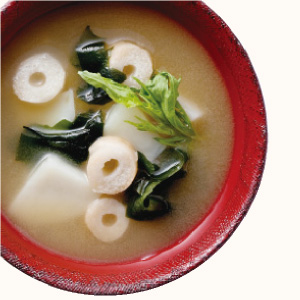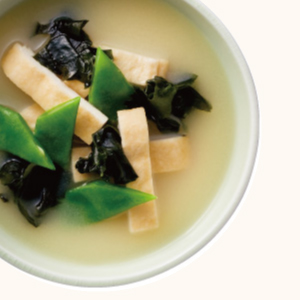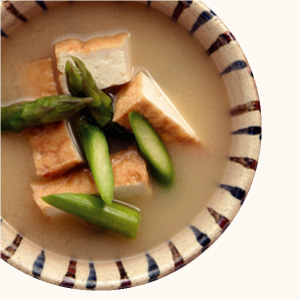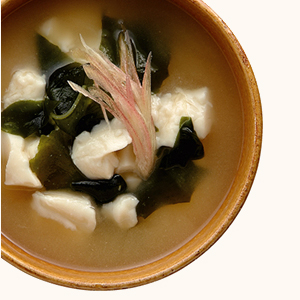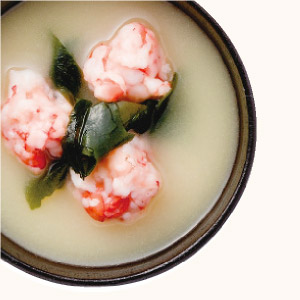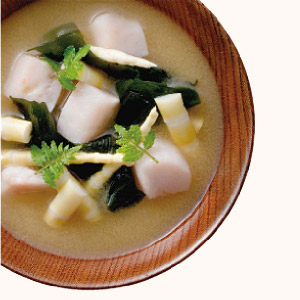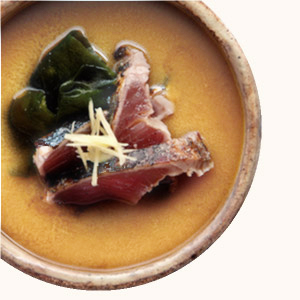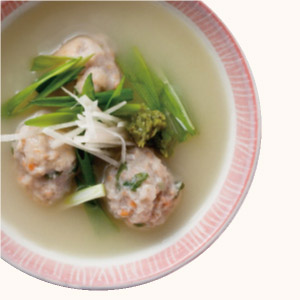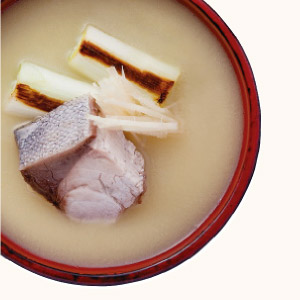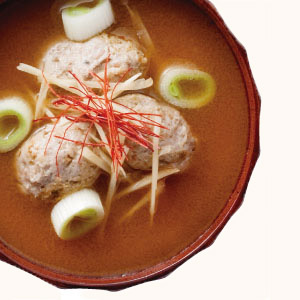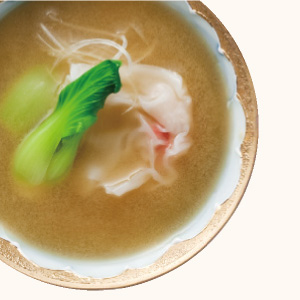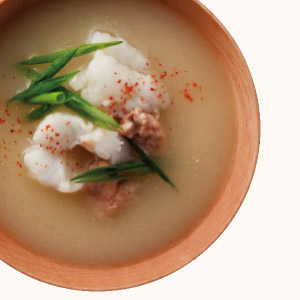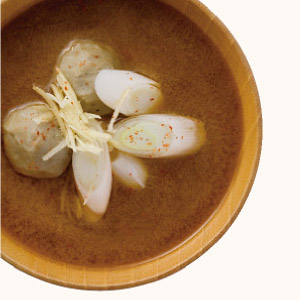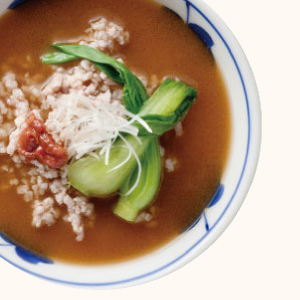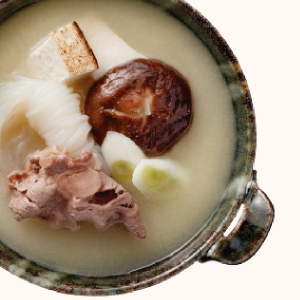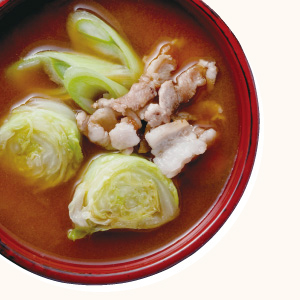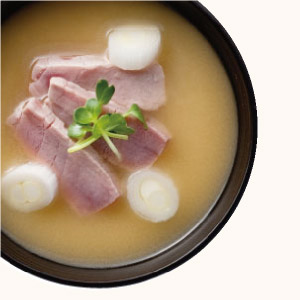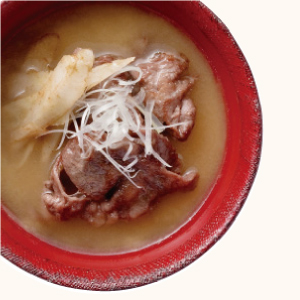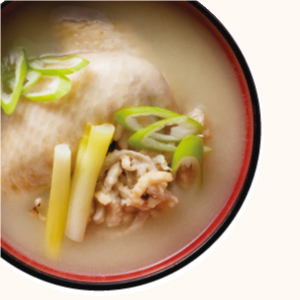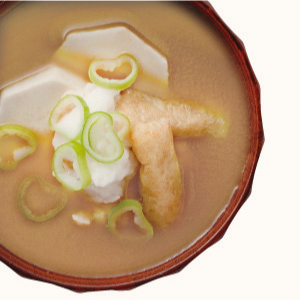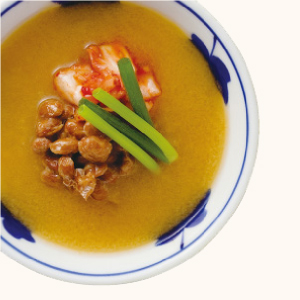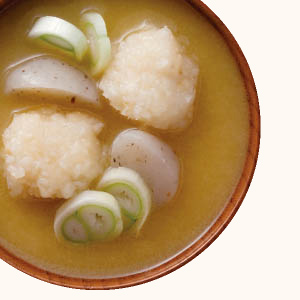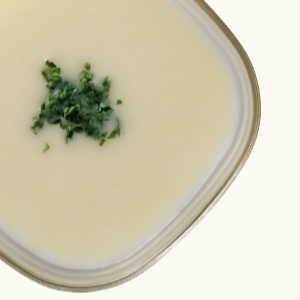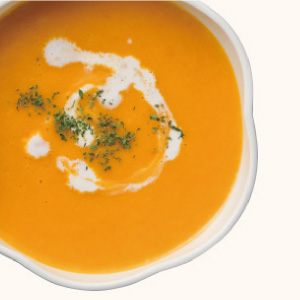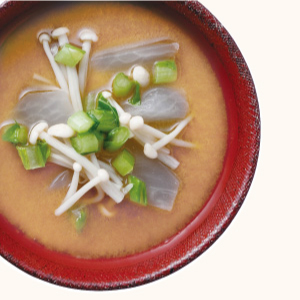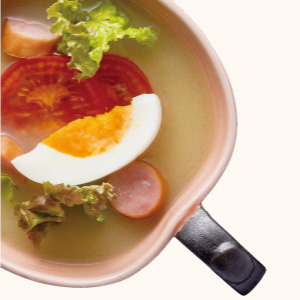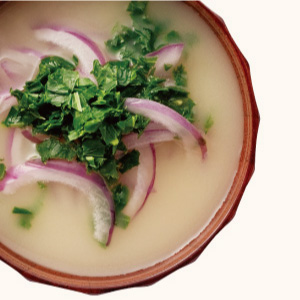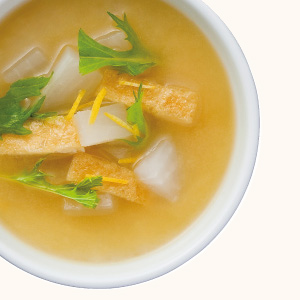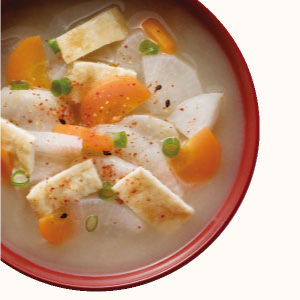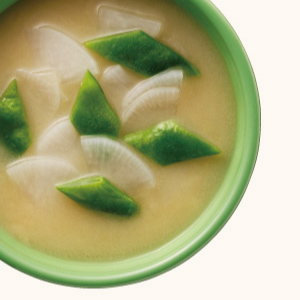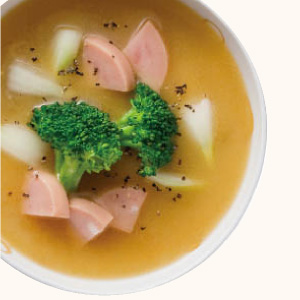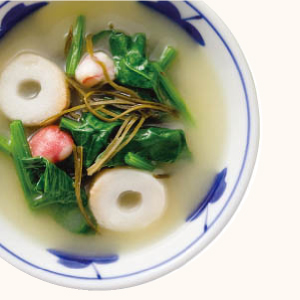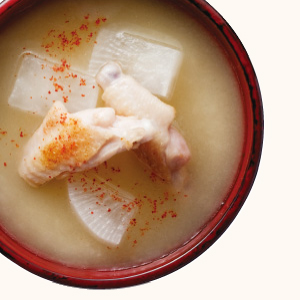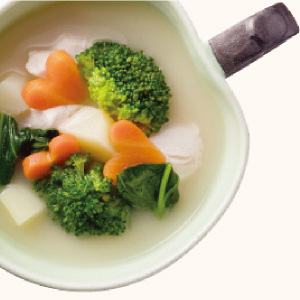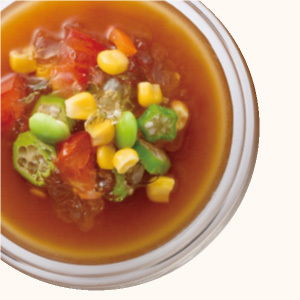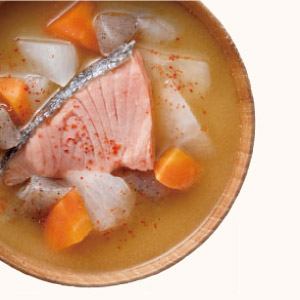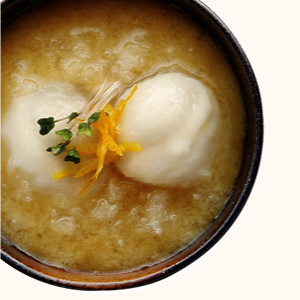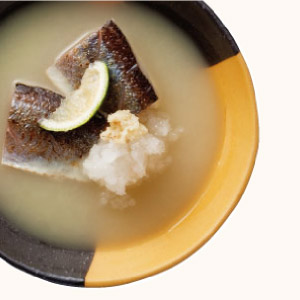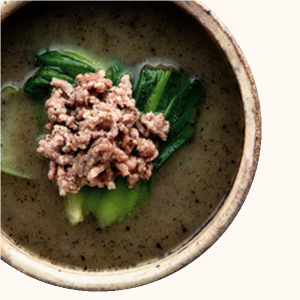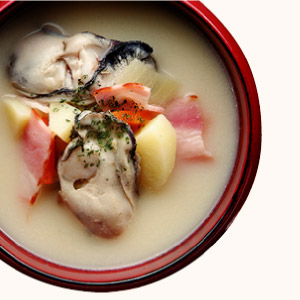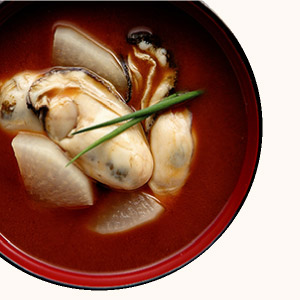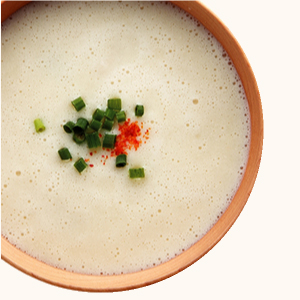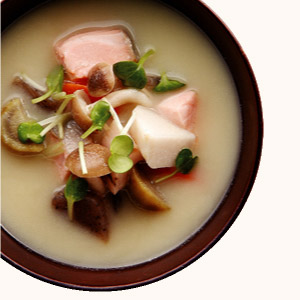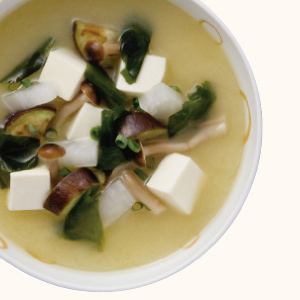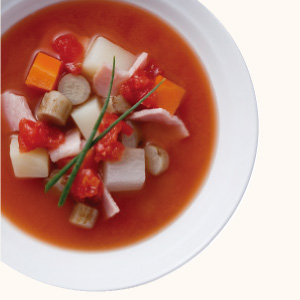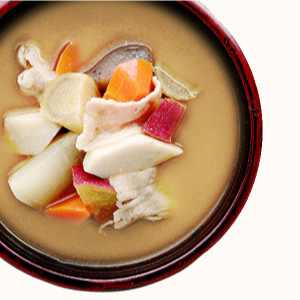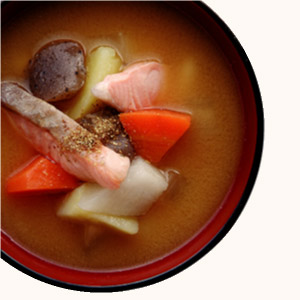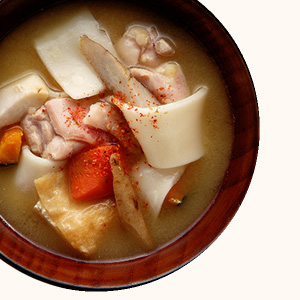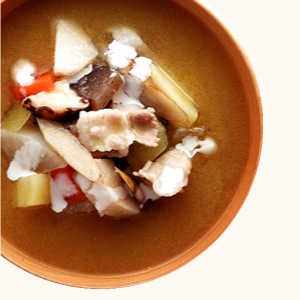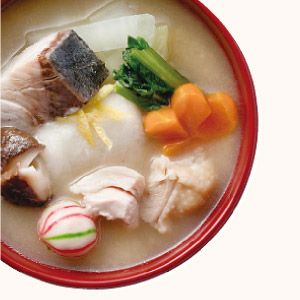
Wakame Miso Soup
About Wakame

Wakame seaweed has been eaten as a standard supporting ingredient for miso soup. It has low calories and plenty of nutrients, such as vitamins and minerals. It is a superior healthy food. While salted wakame and dried wakame are available throughout the year, its season is March ~ May. During this period, you can enjoy tender and tasty fresh wakame.
Wakame Miso Soup Recipes
Wakame Miso Soups with Popular Vegetables
Wakame Miso Soups with Fish
Nutrition of Wakame
Wakame is harvested throughout Japan. It is well known to have plenty of dietary fiber. It also contains alginic acid, which is a component of sliminess, and minerals, such as calcium and magnesium. Since it has low calories, you can eat it in a large amount without worrying about calories.
Preparation
Wakame consists of the leaf (the section usually called wakame), the sporophyll (mekabu, or the thick leaf at the base) and the stem (kuki-wakame). They have different textures and tastes and can be cooked differently. You can simply add mekabu to miso soup just before serving or use kuki-wakame for stews and pan-fried dishes.
Negi Miso Soup
About Negi

Negi is the general name for green onions and leeks. It can be used as an ingredient with other ingredients in stews and soups, and, if minced, can be used as a good condiment. In the Kanto area, Japanese leeks (shironegi) are widely used, and green onions are preferred in the Kansai area. Negi is a nutritious ingredient containing various nutrients, such as vitamins A and C, calcium and β carotene.
Negi Miso Soup Recipes
Negi Miso Soups with Fish
Negi Miso Soups with Meat
Miso Soups with Plenty of Vegetables
Kinds of Negi
Negi can be largely grouped into the nebuka-negi (Japanese leek) and the ha-negi (green onion). In the past, nebuka-negi was widely eaten in the Kanto area and ha-negi in the Western area. Because of the development of distribution systems, various kinds of negi are eaten anywhere in Japan. Famous nebuka-negi are Kaga-negi, Senju-negi and very famous Shimonita-negi. Among the ha-negi kinds, Kujo-negi and Hakata-bannonegi are famous.
How to Store Negi
In case of nebuka-negi with roots and ha-negi and if you have a garden, lay them on the soil and cover with soil except for the green portions. In case of negi without roots, wrap them with newspaper, put in a plastic bag and place, upright if possible, in the vegetable compartment of a refrigerator. In case of chopped negi, remove water with a paper towel, place in a sealed bag or container and store it in a freezer.
Daikon Miso Soup
About Daikon

Daikon radish has been eaten in Japan since ancient times. Its root and leaves are both edible. Fresh daikon has a refreshing spiciness and is often used as a condiment for various dishes, particularly for sashimi, or sliced raw fish. If heated, it becomes tender and sweet. Since it develops umami (good taste) if simmered, it is good as an ingredient for miso soup.
Daikon Miso Soup Recipes
Daikon Miso Soups with Ingredients in Your Refrigerator
Feast Miso Soups with an Arrangement
Miso Soups with Plenty of Vegetables
Ingredients Good for Daikon Miso Soup
While daikon can be combined with various ingredients in miso soup, its combination with Chinese cabbage or onion may make the miso soup bland.
It is recommended to use daikon with ingredients with different textures, such as aburaage and wakame, or with chewy ingredients, such as meat and fish.
Kinds of Daikon
Most of the daikon available on the market are aokubi-daikon, and it occupies 90% of the daikon production.
Some other daikon varieties carry the names of their production areas, such as Kamedo daikon, Nerima daikon, Miura daikon and Momoyama daikon. Moriguchi daikon is thin and grows up to 2 ~ 3 m. It is made into Moriguchi pickles. In recent years, some traditional daikon varieties have become popular, such as round Shogoin daikon in Kyoto and Gensuke daikon in Kanazawa.
You can try various kinds of daikon for your miso soup.


